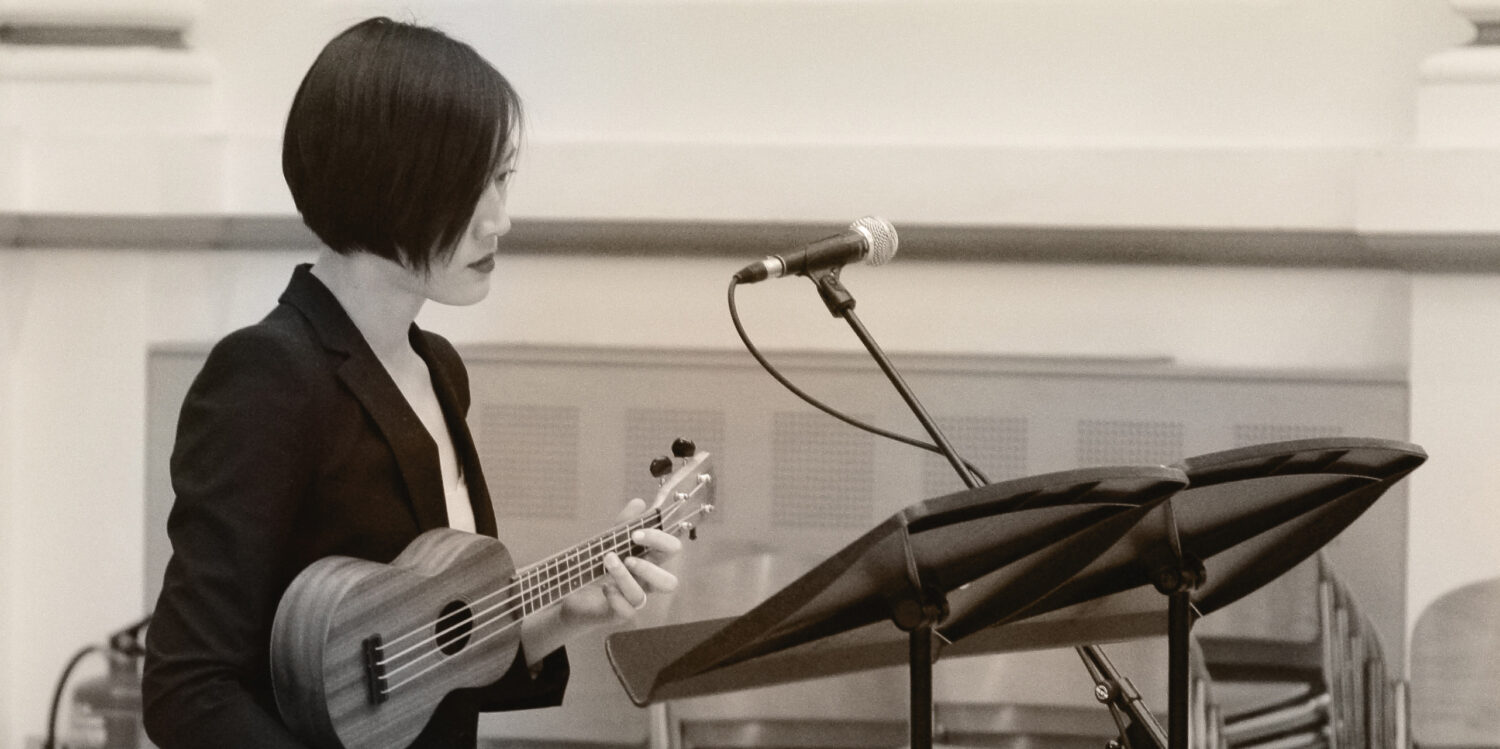The first time I met this piece was at the Darmstadt summer academy. Jennifer Walshe walked onto the stage with her red ukulele, strummed the first chord, and I was a goner. It was exquisite.
The piece was listed as “Three Songs by Ukeoirn O’Connor” in the program. So, once I got home, I started looking for some way to contact Ukeoirn O’Connor. There were some writings about him and the piece, but I couldn’t find a website or email for him at all. Finally, I sheepishly emailed Jen, asking if she could please put me in touch with him. I felt bad bothering her for such a small thing, but I was desperate: I really wanted to do the piece.
To my surprise, she emailed back and told me that she was the composer. Somehow, during all of my digging, I failed to figure out that Ukeoirn O’Connor was member of Grúpat: an art collective entirely peopled by Jen’s meticulously constructed alter egos with real-life outputs such as installations, albums, books, etc. and online footprints in interviews and articles.
Jen asked if I could meet her in London in a few weeks. She hadn’t intended for someone else to perform the piece, so the score needed a clean-up and she needed to walk me through some details. I gladly said yes, hopped on a Megabus from Huddersfield to London, and met her at the cafe inside Foyles.
Jen showed me the three-page score, which had mnemonics for the various vocal colors: there was “Morrissey”, “Fozzie Bear”, “Cocteau Twins” in the first movement, and various tongue positions plus direct samples from a recording Jen found of Irish women miners singing in the third movement. For the second movement, Jen spoke about how she strummed the ukulele with her thumb angled, so the fleshy pad contacted the strings and made a meatier sound. (She also warned me about getting a blister from that and suggested that I build up a callous on my thumb. Unfortunately, I’ve never been able to build up callouses on my fingers, even during my serious violinist days, so I’ve always played this piece with a bouncy, bubble-like thumb blister on the verge of popping mid-performance.)
The best way to learn the piece, she said, was to look at the score and listen to her recording of the piece. The piece lived somewhere between the notated score and her performances.
By tracing over Jen’s recording as carefully as possible each time, every tiny flaw and accidental deviation I make is a beautiful, unintentional affirmation of my presence. I don’t try to copy Jen’s voice when preparing the piece, I’m not trying to mimic the sonic surface. Jen’s recording and score are my conduits to accessing this piece, this ontologically independent entity. Preparing this piece is an act of triangulation between the oral tradition from Jen, the piece itself, and my own body.
Three Songs by Ukeoirn O’Connor is as close as I get to belonging to a folk tradition. It has a special place in my repertoire: most of the time I’m looking for ways to stop shouldering the weight of a piece’s performance history by looking at it with fresh eyes, or I’m treading into unknown territory and creating a performance history for a new work. Three Songs by Ukeoirn O’Connor is the one piece where I embrace the being part of a lineage. It might sound like experimental music, but I prepare the piece with a sense of responsibility and respect towards its oral history. I love this piece, and I am deeply grateful to Jen.
It’s interesting to note that Jen’s Ukeoirn O’Connor is part Irish and part Japanese, a mix of two cultures, like me. I didn’t know that when I first heard the piece, I just felt an unexplainable pull towards it. But it makes sense, in hindsight, that it is a folk song I chose to claim for myself. This piece is a belonging-place for me, and the process of preparing it is a tradition I follow together with Ukeoirn O’Connor: gazing both into the past and future, simultaneously disrespectful and honoring, nostalgic for an imaginary past and impatient for the unclear future.
